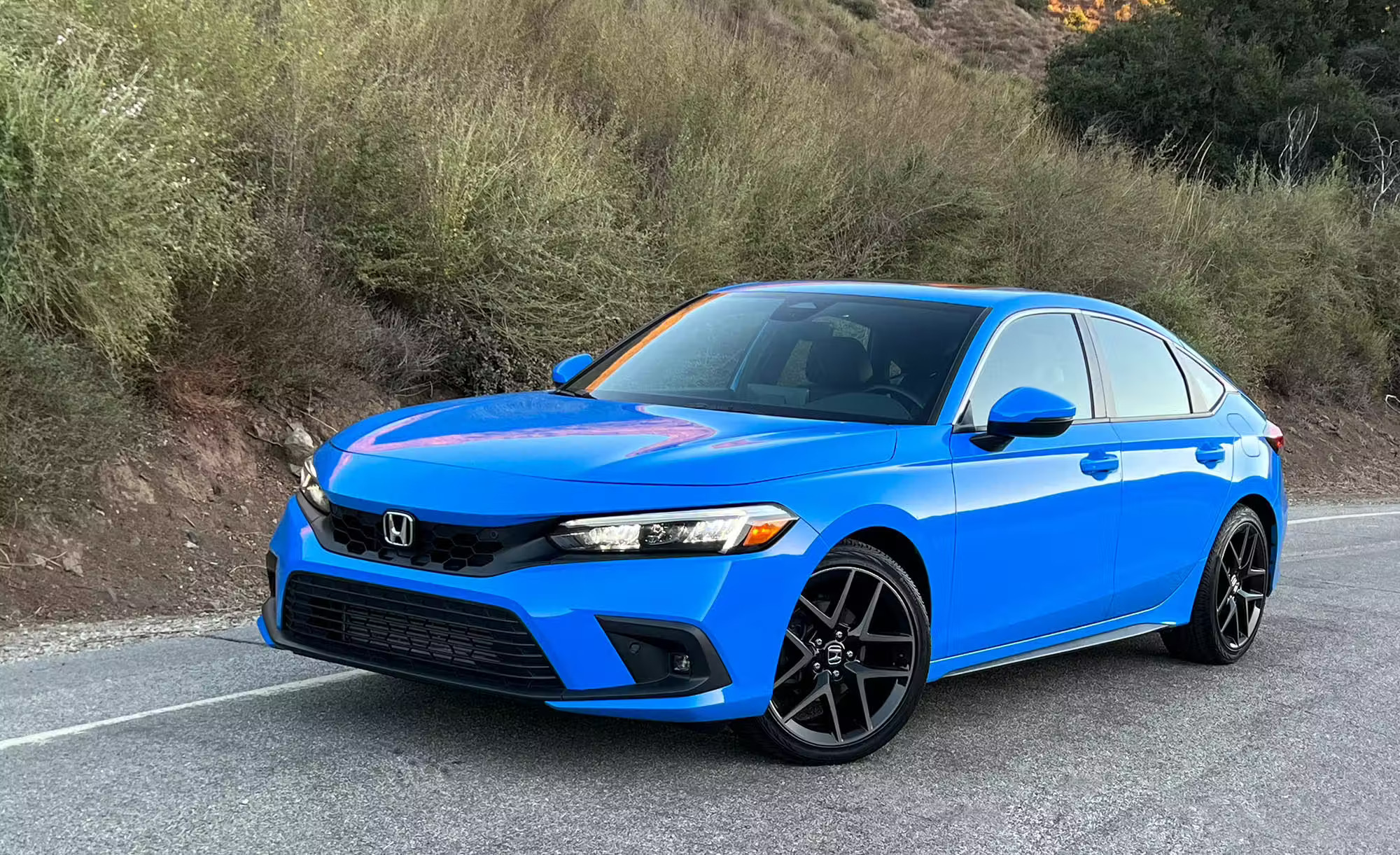The automotive world presents a fascinating dichotomy between vehicles built to last and those that struggle with reliability from day one. On one side, we have hatchbacks that have earned legendary status for their durability, continuing to run smoothly well beyond 200,000 miles with minimal maintenance.
These vehicles represent engineering excellence, where manufacturers prioritized long-term reliability over short-term cost savings. They feature robust engines, quality materials, and time-tested designs that have proven their worth across decades of real-world use.
Conversely, the microcar segment tells a different story. While these diminutive vehicles offer affordability and fuel efficiency, many suffer from compromised build quality due to aggressive cost-cutting measures.
Manufacturers often prioritize low purchase prices over long-term reliability, resulting in vehicles plagued by electrical failures, premature engine wear, and component breakdowns that can leave owners stranded and facing expensive repairs.
This comprehensive comparison examines five hatchbacks renowned for their exceptional durability against five microcars notorious for reliability issues.
Understanding these contrasts helps potential buyers make informed decisions, whether they prioritize longevity and peace of mind or are willing to accept potential reliability challenges in exchange for lower upfront costs and urban maneuverability.
5 Hatchbacks That Defy Wear
These exceptionally built compact vehicles deliver remarkable longevity through robust construction, proven powertrains, and quality materials that resist deterioration and mechanical failure despite intensive daily use and challenging environmental conditions over extended ownership periods.
Their solid engineering incorporates reinforced body structures, reliable electrical systems, and durable interior components that maintain functionality and appearance while accumulating hundreds of thousands of miles without major repairs or component replacements.
The combination of reasonable purchase prices, excellent parts availability, and straightforward maintenance creates ownership experiences that maximize both practicality and value retention.
From respected manufacturers with compact car expertise to proven models with extensive real-world testing, these vehicles demonstrate that small car excellence comes through fundamental engineering strength rather than cost-cutting measures, providing efficient urban transportation that outlasts larger competitors through superior material quality and assembly precision that prioritizes durability over initial affordability.
1. Toyota Corolla Hatchback
The Toyota Corolla hatchback stands as a monument to automotive reliability, consistently ranking among the most dependable vehicles ever produced. Built on Toyota’s robust TNGA platform, this hatchback incorporates decades of engineering refinement that has made the Corolla nameplate synonymous with longevity.
The secret to its exceptional durability lies in Toyota’s conservative engineering approach, using proven technologies rather than cutting-edge systems that might fail prematurely.
Under the hood, the Corolla hatchback features either a naturally aspirated 2.0-liter four-cylinder engine or a hybrid powertrain, both designed for maximum reliability. The gasoline engine employs Toyota’s dual VVT-i technology, which has been refined over years to eliminate common failure points.
The transmission options include a continuously variable transmission (CVT) or a six-speed manual, both engineered to withstand hundreds of thousands of miles with proper maintenance. Toyota’s meticulous quality control processes ensure that each component meets strict durability standards before leaving the factory.
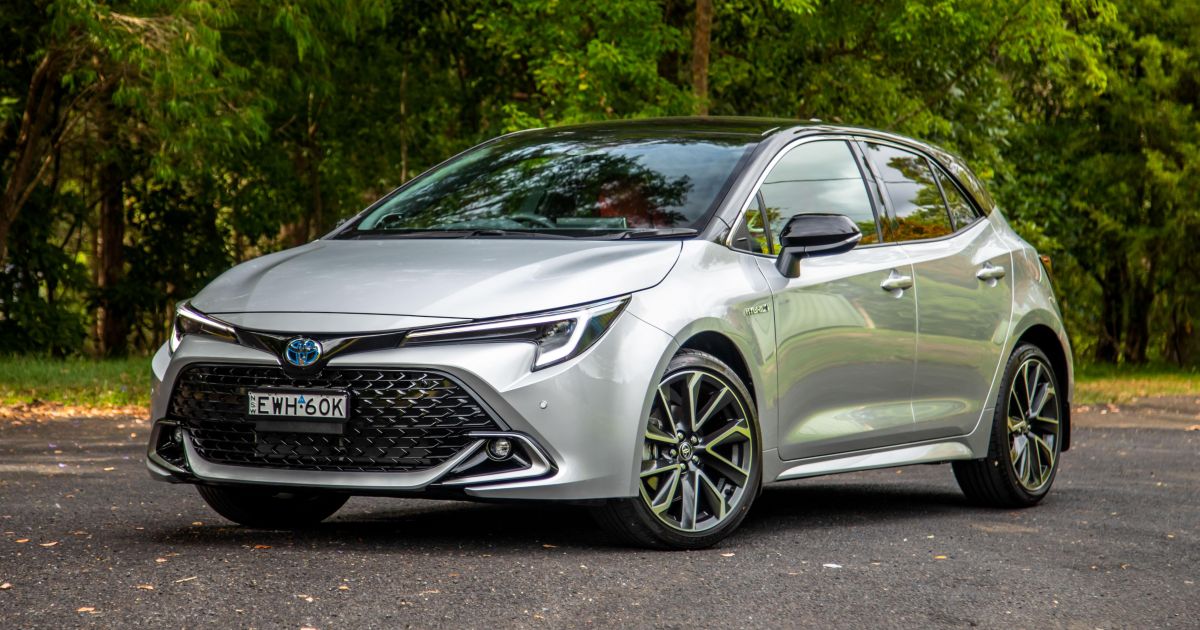
The build quality extends beyond the powertrain to every aspect of the vehicle. The interior materials, while not luxurious, are chosen for their resistance to wear and fading.
Dashboard plastics maintain their appearance even after years of sun exposure, while seat fabrics resist pilling and tearing. The electrical systems use high-quality connectors and wiring harnesses that rarely develop the gremlins that plague other vehicles.
Even seemingly minor components like door handles, window regulators, and climate control systems are over-engineered to prevent premature failure.
What truly sets the Corolla hatchback apart is its ability to maintain performance and efficiency throughout its lifespan. Owners regularly report vehicles with 300,000+ miles that still start reliably, achieve excellent fuel economy, and pass emissions tests without issue.
The resale value remains strong precisely because buyers understand they’re purchasing proven reliability. Maintenance costs stay reasonable due to widely available parts and straightforward servicing procedures that most mechanics can perform competently.
2. Honda Civic Hatchback
Honda’s Civic hatchback represents another pinnacle of automotive durability, built upon the foundation of Honda’s legendary engineering philosophy that emphasizes mechanical simplicity and robust construction.
The current generation continues Honda’s tradition of creating vehicles that not only survive but thrive under demanding conditions, from stop and go city traffic to high-speed highway cruising. The Civic’s reputation for longevity stems from Honda’s commitment to thorough testing and quality materials throughout the development process.
The heart of the Civic hatchback’s reliability lies in its powertrain options, particularly the naturally aspirated 2.0-liter four-cylinder engine that powers the base models.
This engine represents decades of refinement, incorporating lessons learned from millions of miles of real-world operation. Honda’s i-VTEC technology provides excellent performance while maintaining conservative operating parameters that reduce stress on internal components.
The turbocharged 1.5-liter option, while more powerful, has also proven reliable in testing, though the naturally aspirated engine edges it out for pure longevity.
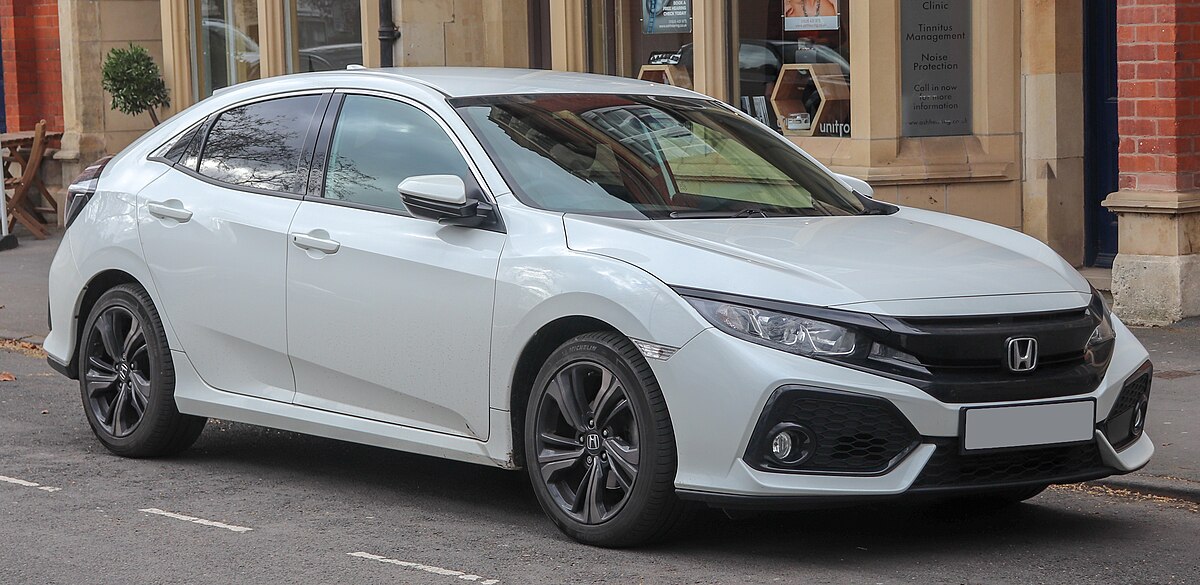
Transmission choices include Honda’s acclaimed six-speed manual and CVT automatic, both designed to complement the engine’s characteristics perfectly.
The manual transmission, in particular, has earned praise for its precise shifting feel and exceptional durability, with many examples exceeding 250,000 miles without requiring major service.
The CVT, while initially met with skepticism, has proven surprisingly robust in Honda applications, avoiding the premature failures that have plagued CVTs from other manufacturers.
The Civic’s structural integrity contributes significantly to its longevity. Honda’s Advanced Compatibility Engineering (ACE) body structure not only provides excellent crash protection but also maintains dimensional stability over time, preventing the squeaks, rattles, and misaligned panels that develop in lesser vehicles.
The suspension components are engineered with generous safety margins, using high-quality bushings and joints that resist wear even under harsh driving conditions.
Paint quality and corrosion resistance have improved dramatically in recent generations, with Honda’s multi-stage coating process providing excellent protection against the elements.
3. Mazda3 Hatchback
The Mazda3 hatchback exemplifies how a manufacturer can create an exceptionally durable vehicle while maintaining engaging driving dynamics and premium build quality.
Mazda’s commitment to craftsmanship and its “Jinba Ittai” philosophy of human-car unity results in vehicles that not only last but continue to provide driving pleasure throughout their extended lifespans.
The Mazda3’s reliability stems from the company’s focus on mechanical excellence and attention to detail that rivals luxury manufacturers. Mazda’s SkyActiv engine technology powers the Mazda3 hatchback, representing a revolutionary approach to internal combustion efficiency and durability.
The naturally aspirated 2.5-liter four-cylinder engine achieves an impressive 13:1 compression ratio while maintaining exceptional reliability through advanced engineering solutions.
The high compression ratio, combined with precise fuel injection and ignition timing, results in complete combustion that reduces carbon buildup and extends engine life.
The SkyActiv transmission, available in both manual and automatic configurations, complements the engine perfectly with smooth operation and exceptional longevity.
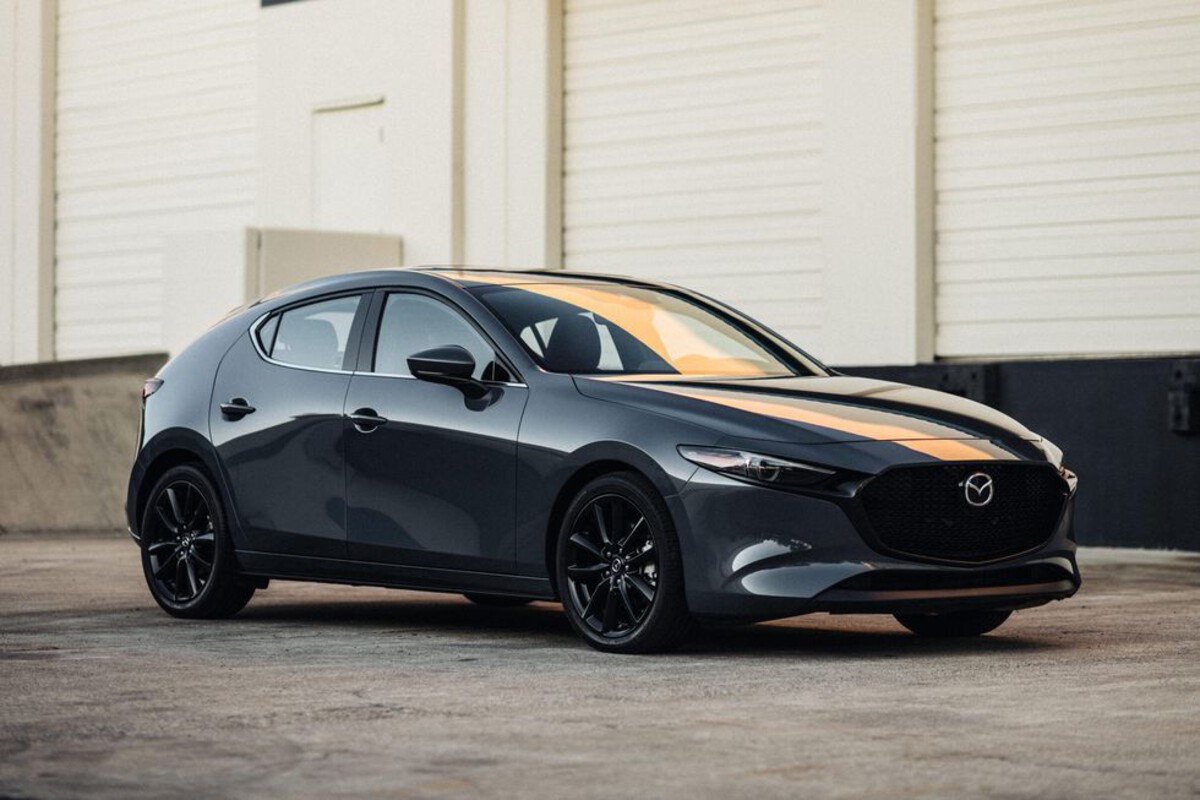
Build quality in the Mazda3 surpasses expectations for its price class, with interior materials that resist wear and maintain their appearance over time.
The dashboard construction uses soft-touch materials and high-quality switchgear that continues operating smoothly even after years of use. Mazda’s attention to noise, vibration, and harshness (NVH) control means that the cabin remains quiet and comfortable throughout the vehicle’s lifespan, with door seals and insulation maintaining their effectiveness over time.
The Mazda3’s electrical systems demonstrate exceptional reliability, using high-quality components and robust wiring harnesses that resist corrosion and connection issues.
The infotainment system, while not the most advanced, proves remarkably stable and continues functioning properly long after more complex systems in competing vehicles have failed.
Even advanced features like the adaptive cruise control and blind-spot monitoring maintain their accuracy and reliability throughout the vehicle’s service life, testament to Mazda’s thorough testing and quality control processes.
4. Volkswagen Golf
The Volkswagen Golf hatchback has earned its reputation as one of the most durable and well-engineered vehicles in automotive history, with examples regularly surpassing 300,000 miles while maintaining their structural integrity and driving dynamics.
Volkswagen’s German engineering philosophy emphasizes over-building components and systems, resulting in a vehicle that feels solid and substantial from the moment you close the door.
The Golf’s longevity stems from VW’s commitment to using high-quality materials and conservative engineering approaches that prioritize durability over flashy features.
Under the hood, the Golf offers several engine options, but the naturally aspirated engines have proven most reliable over time. The 1.8-liter and 2.0-liter four-cylinder engines represent decades of refinement, incorporating robust internal components that withstand high mileage without major issues.
Volkswagen’s engineering team designs these powertrains with generous safety margins, using forged internals and high-quality bearings that maintain proper clearances even after hundreds of thousands of miles.
The transmission options, including VW’s renowned manual gearboxes and DSG dual-clutch automatics, provide smooth operation and exceptional longevity when properly maintained.
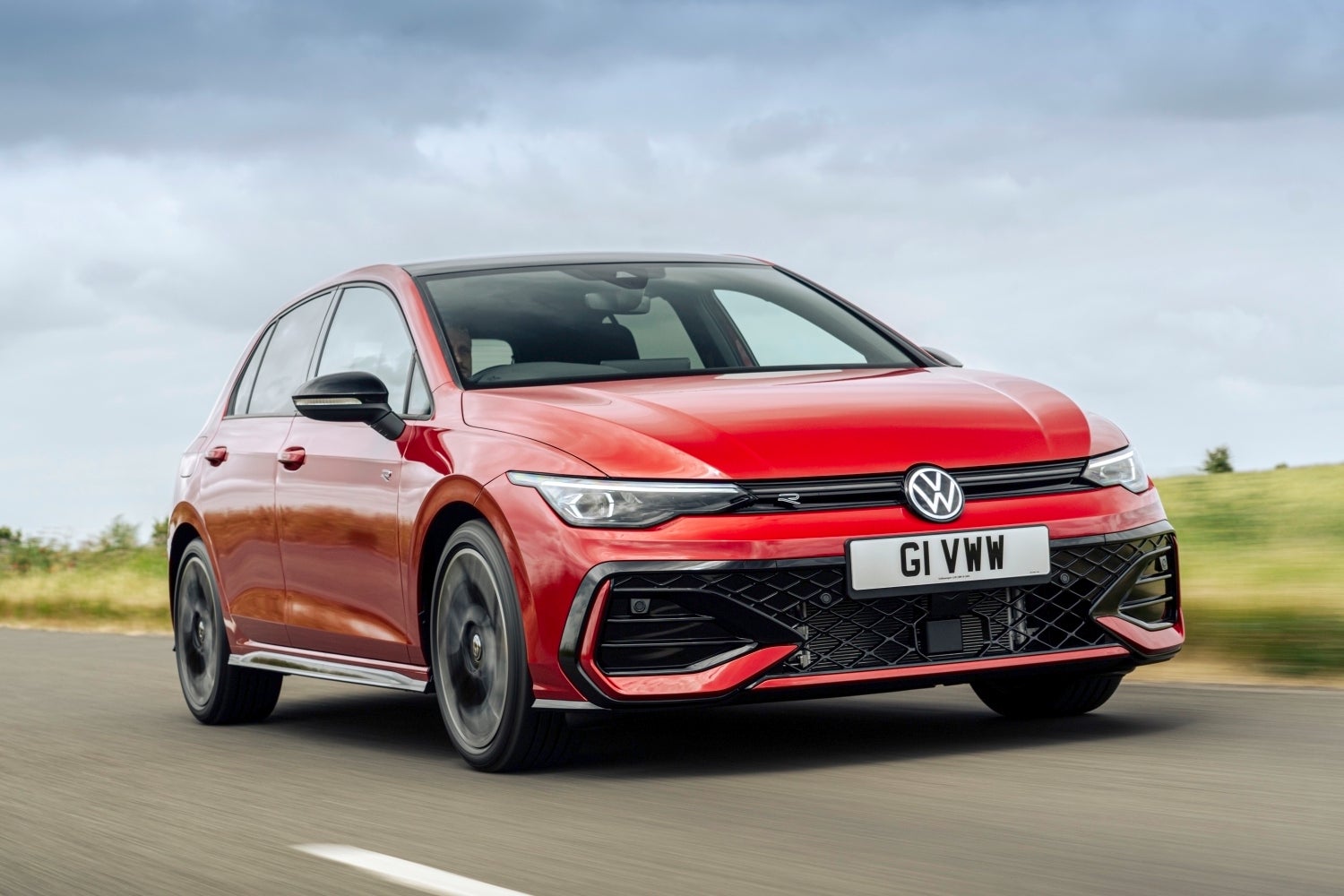
The Golf’s interior exemplifies German attention to detail and quality, with materials chosen for their durability rather than initial visual impact. The seats maintain their support and comfort even after years of use, while the dashboard and trim pieces resist fading and cracking.
Volkswagen’s electrical systems, while complex, use high-quality components and robust wiring that rarely develop the mysterious failures common in other vehicles.
The climate control system, power windows, and other convenience features continue operating smoothly throughout the vehicle’s extended service life.
What sets the Golf apart is its ability to maintain its premium feel and driving dynamics throughout its lifespan. The suspension components, steering system, and chassis retain their precision and responsiveness even at high mileage, providing a driving experience that remains engaging and confidence-inspiring.
The build quality extends to seemingly minor details like door hinges that never sag, interior trim that stays properly aligned, and paint that maintains its luster with minimal care.
Also Read: 5 Little-Known Wagons That Last vs 5 Trendy SUVs That Don’t
5. Hyundai Elantra GT
The Hyundai Elantra GT represents a remarkable transformation in Hyundai’s approach to vehicle reliability and durability, showcasing how a manufacturer can dramatically improve quality while maintaining affordability.
Modern Hyundai vehicles, including the Elantra GT, benefit from the company’s substantial investment in research and development, resulting in vehicles that rival traditional reliability leaders.
The Elantra GT’s exceptional durability stems from Hyundai’s adoption of proven technologies and its commitment to extensive testing and quality control.
Powering the Elantra GT is Hyundai’s thoroughly tested 2.0-liter four-cylinder engine, which incorporates technologies designed to maximize longevity while providing adequate performance.
The engine features a robust bottom end with forged components and high-quality bearings that maintain proper oil pressure and clearances throughout the engine’s extended service life.
Hyundai’s conservative tuning approach prioritizes reliability over maximum power output, resulting in an engine that operates well within its design limits and rarely experiences premature failure. The available turbocharged 1.6-liter engine, while more powerful, has also proven reliable in real-world applications.
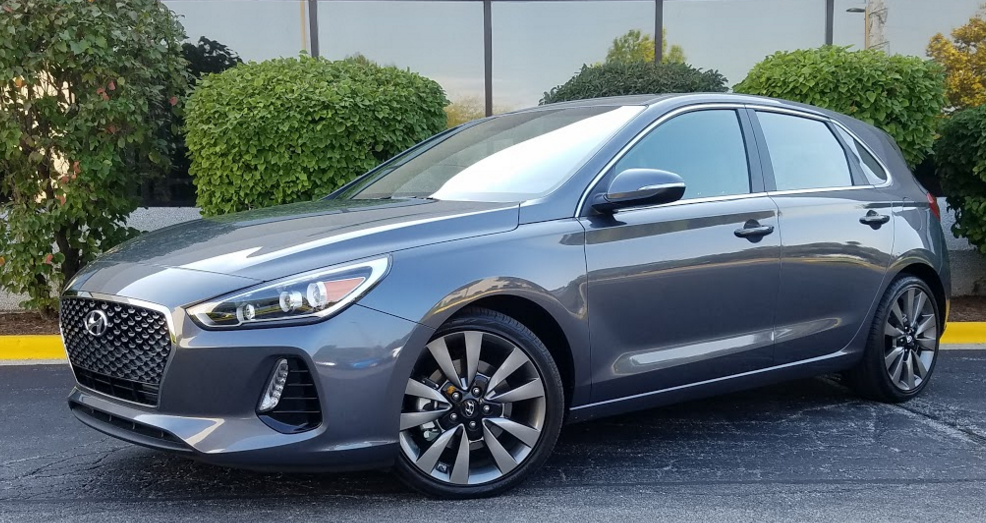
The transmission options in the Elantra GT demonstrate Hyundai’s commitment to durability, with both manual and automatic variants engineered to provide smooth operation throughout their extended service lives.
The six-speed manual transmission offers precise shifting and exceptional longevity, while the automatic transmission uses robust internals and sophisticated control systems that adapt to driving conditions while protecting components from excessive wear. Hyundai’s extensive warranty coverage reflects their confidence in these powertrains’ long-term reliability.
Interior quality in the Elantra GT exceeds expectations for its price point, with materials selected for their resistance to wear and environmental factors.
The dashboard plastics maintain their appearance even after years of sun exposure, while seat materials resist pilling and tearing under normal use.
The electrical systems demonstrate exceptional reliability, using quality connectors and wiring harnesses that resist corrosion and connection issues.
Even advanced features like the touchscreen infotainment system and climate control continue operating properly throughout the vehicle’s extended service life, testament to Hyundai’s improved quality control processes and component selection.
5 Microcars With Unreliable Components
These budget-focused vehicles disappoint owners with frequent component failures, poor build quality, and reliability issues that contradict their economical pricing through constant repair costs that quickly exceed any initial savings from low purchase prices.
Their cost-cutting construction incorporates substandard materials, inadequate quality control, and problematic systems that generate endless maintenance headaches despite compact positioning that suggests simple, dependable transportation for urban environments.
The combination of cheap components, limited parts availability, and specialized service requirements creates ownership disasters as buyers discover that low initial costs cannot compensate for fundamental engineering compromises that prioritize profit margins over basic reliability.
From budget manufacturers with poor quality standards to economy models with known electrical problems, these vehicles prove that microcar affordability and fuel efficiency mean nothing when basic mechanical dependability fails, transforming economical transportation into expensive repair burdens that require constant attention and frequent component replacement.
1. Mitsubishi Mirage
The Mitsubishi Mirage stands as a cautionary tale of how aggressive cost-cutting can compromise vehicle reliability and owner satisfaction. While the Mirage achieves its primary goal of providing basic transportation at a rock-bottom price, this affordability comes at a significant cost in terms of build quality and long-term durability.
The vehicle’s numerous reliability issues stem from Mitsubishi’s decision to prioritize low manufacturing costs over component quality and thorough testing.
The Mirage’s 1.2-liter three-cylinder engine, while fuel-efficient, suffers from several design compromises that affect long-term reliability. The engine’s lightweight construction uses thinner castings and fewer reinforcing ribs than more robust designs, leading to premature wear and potential failure points.
The timing chain system, while theoretically maintenance-free, has shown tendencies toward premature stretching and noise, requiring expensive repairs that often exceed the vehicle’s value.
The engine’s small displacement and high-stress operation to achieve adequate performance results in accelerated wear on internal components, particularly under demanding driving conditions.
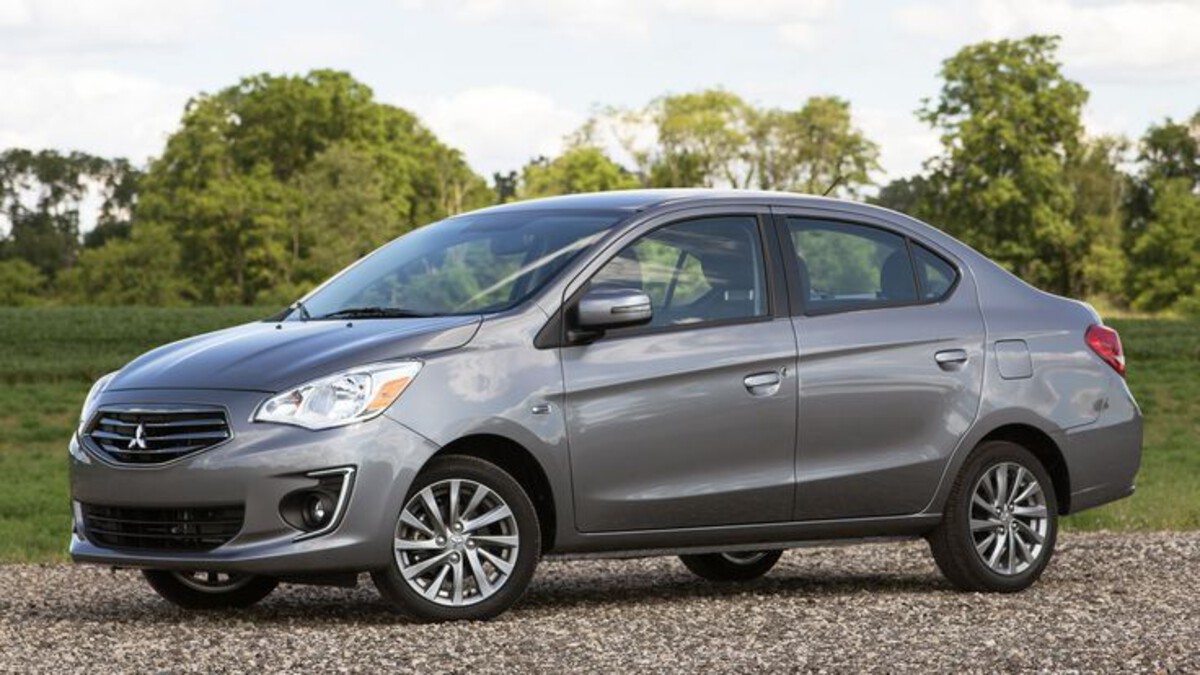
Transmission problems plague both manual and CVT-equipped Mirages, with the CVT showing particular vulnerability to premature failure. The transmission uses a belt-and-pulley system that operates under extreme stress due to the engine’s limited torque output, causing the belt to stretch and slip prematurely.
Many owners report transmission failures within the first 50,000 miles, often requiring complete unit replacement. The manual transmission, while more reliable, suffers from poor shift quality and premature clutch wear due to the lightweight flywheel and cost-reduced clutch components.
Electrical system failures represent another significant reliability concern in the Mirage, with owners reporting issues ranging from minor annoyances to complete system failures.
The alternator, starter, and battery frequently fail prematurely due to undersized specifications and cost-reduced manufacturing processes. Interior electrical components, including the radio, climate control, and power accessories, often develop intermittent faults that prove difficult and expensive to diagnose and repair.
The vehicle’s wiring harnesses use thinner conductors and lower-quality insulation that deteriorate more rapidly than in higher-quality vehicles, leading to mysterious electrical gremlins that frustrate owners and technicians alike.
2. Nissan Versa (Sedan variant as reference for platform issues)
The Nissan Versa, while technically not a microcar, shares many reliability concerns with smaller vehicles due to Nissan’s cost-cutting measures and problematic CVT technology.
The Versa’s reliability issues primarily stem from Nissan’s decision to prioritize low manufacturing costs and aggressive pricing over long-term durability and customer satisfaction.
These compromises have resulted in a vehicle that frequently leaves owners stranded and facing expensive repair bills that often exceed the car’s depreciated value.
The most notorious reliability issue in the Versa involves Nissan’s CVT transmission, which has gained infamy for premature failures across the Nissan lineup.
The transmission’s belt-and-pulley system operates under extreme stress, particularly when coupled with the Versa’s underpowered engine that requires the CVT to work harder to achieve adequate acceleration.
Many owners report complete transmission failure between 40,000 and 80,000 miles, with replacement costs often exceeding $4,000. The CVT also suffers from poor programming that creates a disconnected, sluggish driving experience that many owners find frustrating and potentially dangerous in traffic situations.
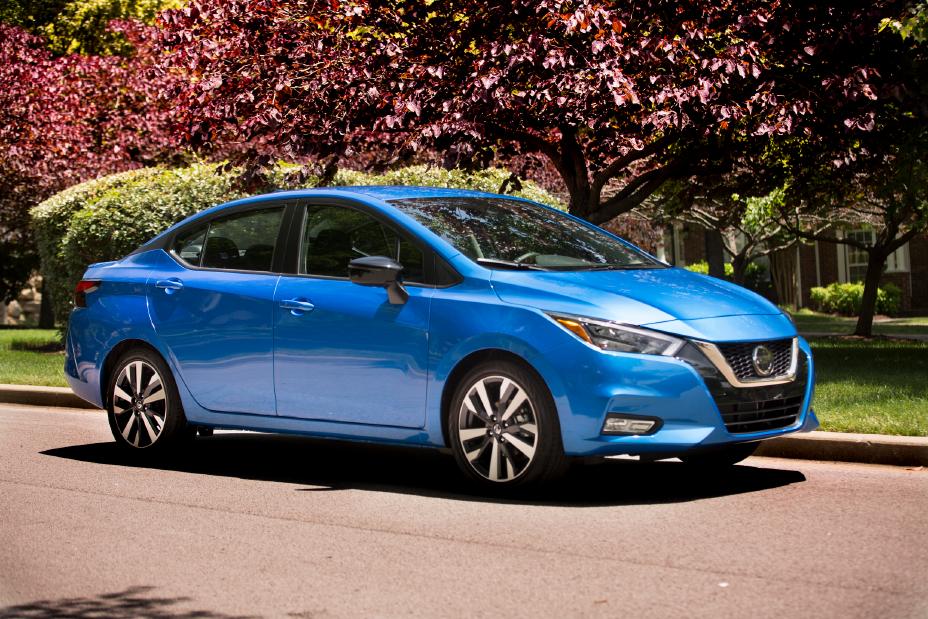
Engine reliability in the Versa proves problematic due to several design compromises and manufacturing cost reductions. The 1.6-liter four-cylinder engine uses a timing chain that has shown tendencies toward premature stretching and failure, often accompanied by loud rattling noises that indicate expensive internal damage.
The engine’s fuel injection system frequently develops issues with carbon buildup and injector failures, leading to rough running, poor fuel economy, and potential engine damage.
The cooling system components, including the radiator, water pump, and thermostat, often fail prematurely due to cost-reduced manufacturing processes and inadequate quality control.
Electrical system problems plague the Versa throughout its lineup, with owners reporting failures in everything from the alternator and starter to interior electronics and safety systems. The vehicle’s electrical architecture uses undersized components and cost-reduced wiring that prove inadequate for long-term reliability.
Air conditioning systems frequently fail due to compressor and condenser issues, while the power steering system (in electric power steering equipped models) often develops faults that result in loss of power assist. These electrical failures often prove intermittent and difficult to diagnose, leading to frustrated owners and high diagnostic costs at dealerships.
3. Chevrolet Spark
The Chevrolet Spark represents General Motors’ entry into the ultra-affordable microcar segment, but this market positioning has required significant compromises in build quality and component durability that manifest as numerous reliability issues throughout the vehicle’s service life.
The Spark’s problems stem from GM’s decision to meet aggressive price targets through extensive cost-cutting measures that affect nearly every system in the vehicle, from the powertrain to the electrical components.
The Spark’s 1.4-liter four-cylinder engine, while adequate for basic transportation, suffers from several reliability concerns that become apparent as the vehicle accumulates mileage.
The engine uses a timing belt system that requires regular replacement, but the belt’s quality and the tensioning system often prove inadequate, leading to premature failures that can cause catastrophic engine damage.
The engine’s lightweight construction incorporates thin-wall castings and minimal reinforcement that contribute to premature wear and potential failure points. Oil consumption issues plague many Spark engines, requiring frequent top-offs and potentially leading to engine damage if not monitored carefully.

Transmission problems affect both manual and automatic-equipped Sparks, with the automatic transmission showing particular vulnerability to premature failure.
The four-speed automatic uses outdated technology and cost-reduced components that prove inadequate for modern driving demands. Many owners report transmission slipping, harsh shifting, and complete failure within the first 60,000 miles.
The manual transmission, while more reliable, suffers from poor shift quality and premature clutch wear due to lightweight components and inadequate engineering for durability.
Electrical system failures represent a major source of frustration for Spark owners, with problems ranging from minor inconveniences to major safety concerns. The alternator frequently fails prematurely, often leaving owners stranded with dead batteries and expensive towing bills.
The starter motor also shows poor longevity, with many requiring replacement within the first few years of ownership. Interior electrical components, including the radio, climate control, and power accessories, often develop intermittent faults that prove difficult to diagnose and repair.
The vehicle’s wiring harnesses use cost-reduced materials that deteriorate more rapidly than higher-quality alternatives, leading to mysterious electrical problems that frustrate owners and service technicians.
4. Smart ForTwo
The Smart ForTwo represents an ambitious attempt to create an ultra-compact urban vehicle, but its unique design and extreme size constraints have resulted in numerous reliability issues that plague owners throughout the vehicle’s service life.
The ForTwo’s problems stem from the challenging engineering requirements of packaging automotive components into such a small space, combined with cost pressures that led to compromises in component quality and system durability.
The Smart ForTwo’s powertrain represents its most problematic area, with the automated manual transmission earning particular notoriety for poor operation and frequent failures.
The transmission system attempts to combine the efficiency of a manual gearbox with the convenience of an automatic, but the execution proves deeply flawed.
The clutch actuator system frequently fails, leaving owners stranded and facing repair bills that often exceed the vehicle’s value. The transmission’s jerky operation and slow shift speeds create a frustrating driving experience that many owners find unacceptable for daily use.

Engine reliability in the ForTwo varies significantly depending on the specific powerplant, but most variants suffer from issues related to the extreme packaging constraints and cost-cutting measures.
The naturally aspirated engines often develop carbon buildup issues due to inadequate ventilation and poor combustion chamber design, leading to rough running and reduced performance.
The turbocharged variants, while more powerful, prove even less reliable due to the additional complexity and heat generation in the cramped engine bay.
Cooling system problems plague all variants, with inadequate airflow and undersized components leading to overheating issues and premature component failure.
Electrical system problems in the ForTwo stem from the challenging packaging requirements and cost-reduced components throughout the vehicle.
The alternator and starter frequently fail due to heat exposure and inadequate ventilation in the cramped engine compartment. The vehicle’s complex electronic systems, including the transmission control module and engine management system, often develop faults that require expensive diagnostic procedures and component replacement.
Interior electrical components suffer from the same issues, with climate control systems, power accessories, and infotainment components showing poor long-term reliability that frustrates owners and service technicians alike.
5. Fiat 500
The Fiat 500, while charming in appearance and concept, suffers from numerous reliability issues that reflect Fiat’s historical struggles with build quality and component durability.
The vehicle’s problems stem from a combination of design compromises, manufacturing cost reductions, and the challenges of adapting European specifications for different markets. These issues have created a reputation for unreliability that significantly impacts owner satisfaction and resale values.
The Fiat 500’s engine lineup includes several problematic powerplants, with the turbocharged variants showing particular vulnerability to premature failure.
The 1.4-liter MultiAir engine uses complex variable valve timing technology that, while innovative, proves troublesome in real-world applications. The MultiAir system frequently develops faults that affect engine performance and fuel economy, while repairs often require specialized knowledge and expensive replacement parts.
The engine’s timing belt system requires regular maintenance, but the belt quality and tensioning system often prove inadequate, leading to premature failures that can cause expensive internal engine damage.
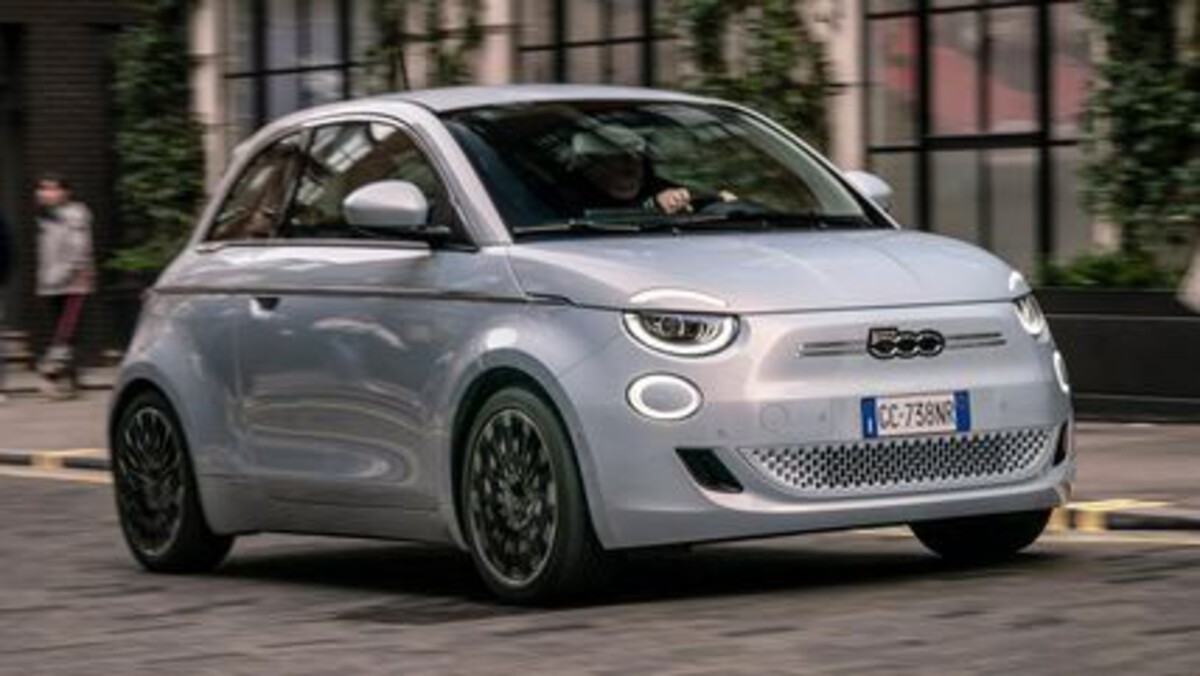
Transmission problems plague both manual and automatic-equipped Fiat 500s, with the dual-clutch automatic showing particular reliability concerns.
The transmission’s complex electronic control systems frequently develop faults that affect shift quality and operation, while the dual-clutch mechanism itself proves vulnerable to premature wear and failure.
Many owners report transmission problems within the first 50,000 miles, often requiring complete unit replacement at costs that approach or exceed the vehicle’s depreciated value.
The manual transmission, while more reliable, suffers from poor shift quality and premature clutch wear due to lightweight components and cost-reduced manufacturing processes.
Electrical system failures represent another significant reliability concern in the Fiat 500, with owners reporting problems throughout the vehicle’s electrical architecture.
The alternator and starter frequently fail prematurely, often due to heat exposure and inadequate cooling in the compact engine compartment. The vehicle’s complex electronic systems, including the body control modules and infotainment system, often develop intermittent faults that prove difficult and expensive to diagnose and repair.
Interior electrical components, including power windows, door locks, and climate control systems, show poor long-term reliability that creates ongoing frustration for owners and significant repair expenses that often exceed reasonable expectations for vehicles in this price class.
Also Read: 5 Rare Diesel Cars That Keep Running vs 5 Common Diesels With Early Turbo Failures

